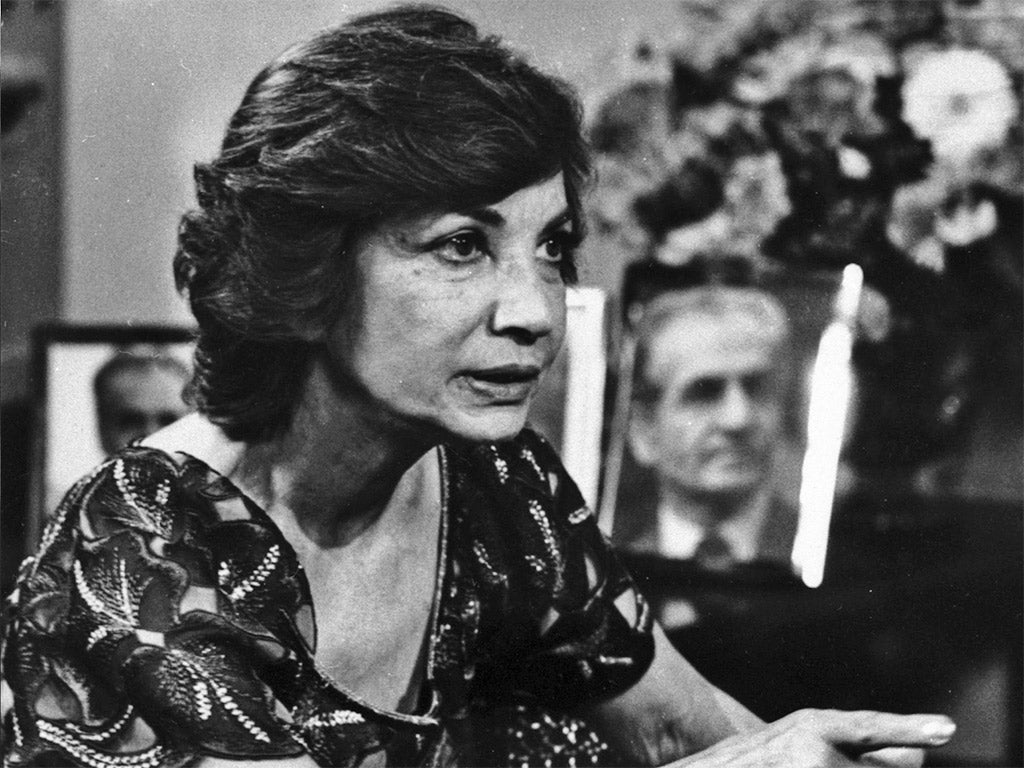Princess Ashraf of Iran: The Shah of Iran's twin sister who was regarded as the power behind the throne and faced corruption allegations
Princess Ashraf's glamorous life epitomised the excesses of her brother's rule

Princess Ashraf Pahlavi, who has died at the age of 96 after decades in exile, was the twin sister of Iran's deposed Shah, Mohammad Reza Pahlavi. Many in the country saw her as the true power behind her brother, after she pushed him into taking power in the 1953 coup engineered by the US – and her glamorous life epitomised the excesses of his rule.
She was immortalised in her royal prime by an Andy Warhol portrait, with bright red lips and raven-black hair, but her years out of power resembled a Shakespearean tragedy. Assassins killed her son on a Paris street just after the Islamic Revolution, her twin brother died of cancer shortly afterwards, while a niece died of a 2001 drug overdose in London and a nephew killed himself in Boston 10 years later.
But she always defended her brother's rule and held on to her royal past. "At night, when I go into my room, that's when all the thoughts come flooding in," she said in a 1983 interview. "I stay up until five or six in the morning. I read, I watch a cassette, I try not to think. But the memories won't leave you."
She was born in Tehran in 1919, the daughter of the Persian monarch Reza Shah, who had come to power in a 1921 coup engineered by Britain but who was forced to abdicate after Britain and Russia invaded in 1941. Then in 1953 the US helped orchestrate the coup that overthrew the country's popularly elected prime minister, Mohammad Mossadegh, over fears that he was tilting toward the Soviet Union. That brought her brother to power and set the stage for decades of mistrust between the countries.
But according to a long-classified CIA account of the coup which was first published by The New York Times in 2000, the Shah was "a man of indecision", and to push the coup along the plotters reached out to "the shah's dynamic and forceful twin sister" who had already been in touch with US and British agents. After "considerable pressure" by her and a US general, the Shah reportedly agreed.
Stephen Kinzer's book All the Shah's Men went into more detail about her role. She was initially reluctant to apply pressure on her brother, so "a delegation of American and British agents came to pose the invitation in stronger terms. The leader of the delegation, a senior British operative named Norman Darbyshire, had the foresight to bring a mink coat and a packet of cash. When Ashraf saw these emoluments, Darbyshire later recalled, 'her eyes lit up and her resistance crumbled'."
As her brother's government ruled in opulence and its secret police tortured political activists, Princess Ashraf focused on women's rights in an appointment to the United Nations. She and her sister Shams were among the first Iranian women to go in public with their hair uncovered, breaking traditional norms in the Shi'ite country. She also worked on other diplomatic missions for Iran.
She travelled widely and became known for gambling on the French Riviera, the French press dubbing her "La Panthère Noire" or "the Black Panther". She survived an assassination attempt in Cannes in 1977 that killed her aide and wounded her chauffeur. The political opposition during the Shah's era criticised the Princess over allegations of corruption, as well as her highly publicised love affairs with Iranian actors and public figures.
"My detractors have accused me of being a smuggler, a spy, a Mafia associate, once even a drug dealer," she once said. She admitted that when she first went into exile in Paris money was tight, and critics pointed to her later wealth, which she attributed to the rising value of land and businesses she had inherited from her father, rather than dodgy dealings in Iran's oil industry. In a New York Times article in 1980 she promised "to fight these slanders with all my means and through whatever judicial means are available." She did not, however, pursue her detractors through the courts.
After her brother was overthrown in 1979 she shuttled between homes in Paris, New York and Monte Carlo. She published a memoir and remained outspoken immediately after the revolution. "After the death of my brother, if we had had the $65 billion some people said we had we would have retaken Iran just like that," she said in 1983.
Princess Ashraf married and divorced three times and had three children. She gradually faded from public view in later years, though she attended Richard Nixon's funeral in 1994. And she always maintained that she regretted nothing. "I would want to do the same thing," she once said. "It's passed, now, only memories. But there were 50 years of grandeur, of glory."
Princess Ashraf Pahlavi, political activist: born Tehran 26 October 1919; married 1937 Ali Ghavam (divorced 1942; one son), 1944 Ahmed Chafik Bey (divorced 1960, died 1976; one daughter, one son), 1960 Mehdi Bushehri (marriage dissolved); died Monte Carlo 7 January 2016.
Join our commenting forum
Join thought-provoking conversations, follow other Independent readers and see their replies
Comments